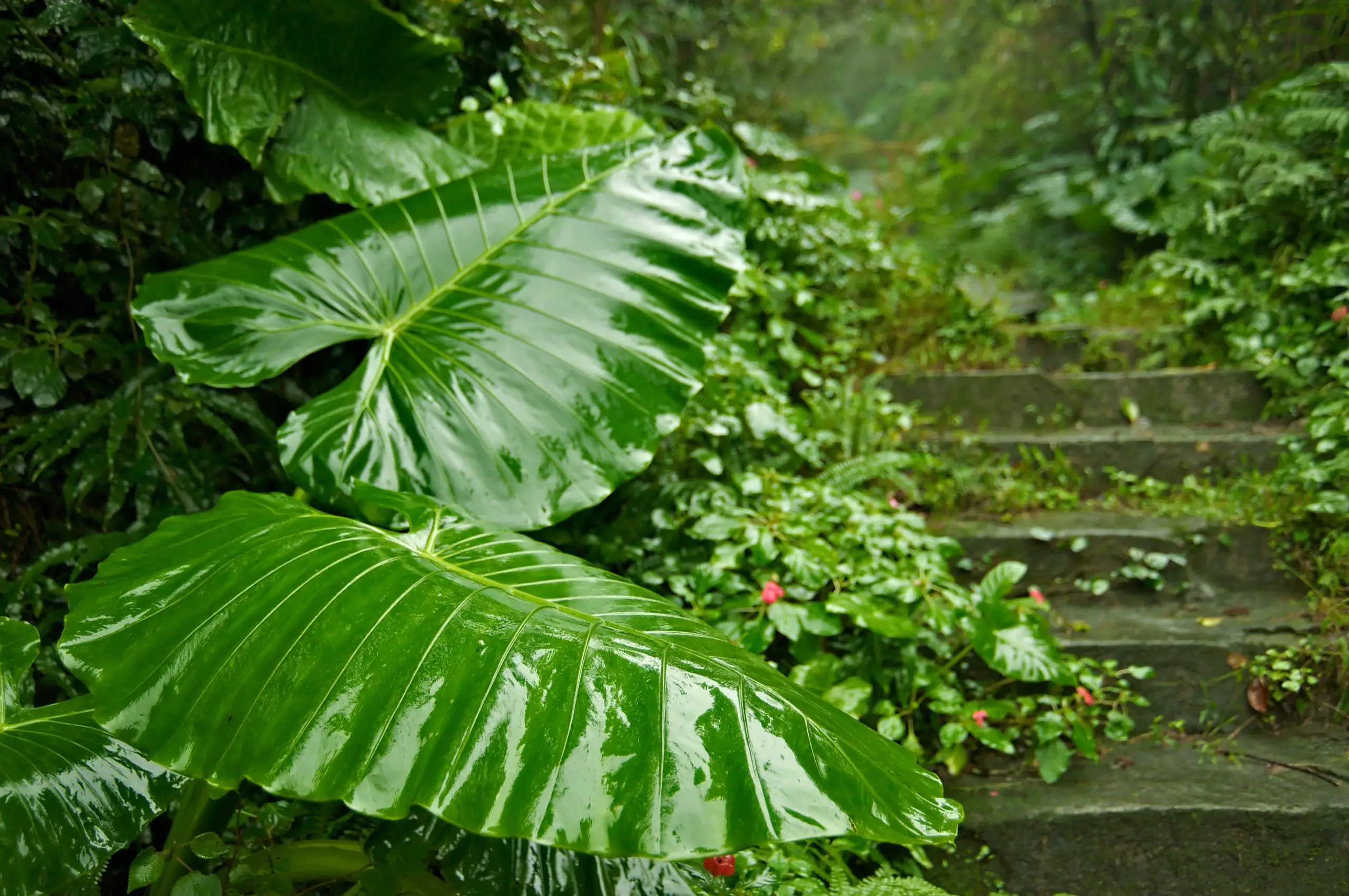Elephant Ear is a captivating plant known for its large, lush leaves that resemble an elephant’s ear. Belonging to several genera, including Colocasia, Alocasia, and Xanthosoma, the Elephant Ear plant comes in various species, each having its unique characteristics and care requirements. These tropical plants are native to Southeast Asia but have found their way into gardens and homes across the world.
Adding a touch of the tropics, Elephant Ear plants are often used as statement pieces in landscaping. The broad leaves, which can grow up to 3 feet long in some species, create an eye-catching display that adds texture and drama. They come in a range of colors, including green, purple, and variegated shades, providing aesthetic versatility.
Apart from their visual appeal, some Elephant Ear species have also been historically cultivated for their edible tubers or as medicinal plants. With the right care, these plants can thrive both indoors and outdoors, making them popular among garden enthusiasts and interior decorators alike.
| Attribute | Details |
|---|---|
| Common Names | Elephant Ear |
| Botanical Name | Colocasia, Alocasia, Xanthosoma |
| Family | Araceae |
| Plant Type | Perennial |
| Mature Size | 3-10 feet tall, depending on species |
| Sun Exposure | Partial to Full Sun |
| Soil Type | Moist, well-draining soil |
| Hardiness Zones | 8-11, varies by species |
| Native Area | Southeast Asia |
Elephant Ear Care
Elephant Ear plants are relatively easy to care for, especially when given the right environment and attention. They need consistent moisture, well-draining soil, and a spot with filtered sunlight or partial shade.
The leaves of the Elephant Ear are its main attraction, so regular cleaning to remove dust and debris will help them look their best. During the growing season, the plant benefits from regular feeding with a balanced fertilizer. Winter care varies significantly depending on the climate and specific species.
Light Requirement for Elephant Ear
Elephant Ear plants thrive in partial to full sun, but they do appreciate some shade during the hottest part of the day. Indoor plants will need bright, indirect light. Too much direct sunlight can cause leaf burn, while insufficient light may lead to leggy growth.
Soil Requirements for Elephant Ear
A rich, well-draining soil that retains some moisture is ideal for Elephant Ear plants. Adding organic matter or compost can help achieve the desired soil texture and nutrient level. A soil pH of 5.5 to 7.0 is typically suitable for most species.
Water Requirements for Elephant Ear
Elephant Ear requires consistent moisture, especially during the growing season. The soil should remain damp but not soggy. Overwatering can lead to root rot, so proper drainage is essential. In drier climates or during hot weather, more frequent watering may be needed.
Temperature and Humidity
Elephant Ear prefers warm, humid conditions. It thrives at temperatures between 65-80°F (18-27°C). If the humidity level is too low, misting the plant or using a humidity tray can help. Most species are not frost-tolerant and must be moved indoors or protected in cold climates.
Fertilizer
A balanced liquid fertilizer, applied according to the manufacturer’s instructions during the growing season, will support robust growth. Over-fertilizing should be avoided as it may cause weak growth and other issues.
Pruning Elephant Ear
Pruning is generally done to remove dead or damaged leaves and improve the plant’s appearance. Using clean, sharp scissors, cut the leaf at the base without damaging the main stem.
Propagating Elephant Ear
Propagation is typically done through division or by using offsets. Carefully separating a healthy section with roots and replanting it will usually result in a successful new plant.
How To Grow Elephant Ear From Seed
Growing Elephant Ear from seed is less common and more time-consuming. Seeds should be sown in a moist, well-draining soil mix and kept at a consistent temperature. Germination can be slow, and seedlings need careful attention.
Common Pests & Plant Diseases
Spider Mites
Regular monitoring and prompt treatment with insecticidal soap can control spider mites.
Aphids
Aphids can be removed with a strong spray of water or treated with insecticidal soap.
Common Problems With Elephant Ear
Yellowing Leaves
Yellowing leaves often result from overwatering or poor drainage. Adjusting watering habits and ensuring proper soil drainage can correct this issue.
Leaf Burn
Leaf burn might occur if the plant is exposed to direct sunlight for prolonged periods. Moving the plant to a more shaded location can prevent this problem.
Pro Tips
- Plant Elephant Ear tubers or bulbs in the spring after the danger of frost has passed.
- Provide ample space for the plant to grow, as it can become quite large.
- Regularly check for pests and diseases to catch any problems early.
- Mulch around the base of the plant to help retain moisture.
- Use a winter cover or move the plant indoors if you live in a region where temperatures drop below the hardiness zone.




